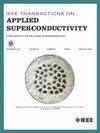VSR腔的机械设计:用于大电流加速器的具有强波导HOM阻尼的椭圆4-Cell 1.5 GHz SRF腔
IF 1.7
3区 物理与天体物理
Q3 ENGINEERING, ELECTRICAL & ELECTRONIC
引用次数: 0
摘要
提出了一种具有强波导高阶模阻尼的椭圆型1.5 GHz超导射频四腔腔的机械设计。它是在可变存储环项目框架中开发的,作为同步加速器光源BESSY II在高达300 mA的光束电流下工作的升级的一部分。这对设计提出了巨大的挑战,要求系统能够提取非常高的HOM功率(每个腔大于2kw),运行过程中产生的应力,以及总腔长度小于1 m以适应给定的磁体晶格。因此,开发了一种紧凑的home波导加载腔,满足了所有要求。腔体最显著的特征是五个波导延伸。本文介绍了型腔及其子群布置中采用的力学解决方案。特别注意的是,数值研究针对高压阻力,同时允许所需的调整。没有遵循标准化的压力容器规范。相反,制定了专门的制造质量控制程序,包括辅助材料测试和焊接鉴定,以允许冷却介质的峰值压力为3.5 bar(a)。本文展示了开发成功的机械设计解决方案,以允许在高梯度和强光束电流的苛刻操作制度下运行此类腔。在撰写本文时,第一个原型已经机械完成,并且已经进行了第一次射频测试。导致后期设计修改的相关制造经验包括在本文中。本文章由计算机程序翻译,如有差异,请以英文原文为准。
Mechanical Design of the VSR Cavity: An Elliptical 4-Cell 1.5 GHz SRF Cavity With Strong Waveguide HOM Damping for High-Current Accelerators
The mechanical design of an elliptical 1.5 GHz superconducting RF 4-cell cavity with strong waveguide higher order mode (HOM) damping is presented. It was developed in the variable storage ring project framework to serve as part of an upgrade for the synchrotron light source BESSY II operating at beam currents of up to 300 mA. This poses a great design challenge, demanding both: a system capable of extracting very high HOM powers (above 2 kW per cavity), the stresses arising during operation, and an overall cavity length of less than 1 m to fit into a given magnet lattice. As a result, a compact HOM waveguide-loaded cavity has been developed, fulfilling all the required criteria. The most remarkable feature of the cavity are the five waveguide extensions. The article describes the mechanical solutions adopted in the layout of the cavity with its subgroups. Special attention is given to numerical studies aiming for high pressure resistance whilst allowing for required tuning. A standardized pressure vessel code was not followed. Instead, a dedicated quality control procedure for manufacturing including ancillary material testing and welding qualification, was developed to allow for peak pressures of 3.5 bar(a) of the cooling medium. This article shows the successful mechanical design solutions developed to allow for the operation of such cavities in demanding operational regimes featuring both high gradients and strong beam currents. At time of writing, the first prototype is mechanically completed, and the first RF tests have been performed. Relevant manufacturing experiences which led to late-stage design modifications are included in this article.
求助全文
通过发布文献求助,成功后即可免费获取论文全文。
去求助
来源期刊

IEEE Transactions on Applied Superconductivity
工程技术-工程:电子与电气
CiteScore
3.50
自引率
33.30%
发文量
650
审稿时长
2.3 months
期刊介绍:
IEEE Transactions on Applied Superconductivity (TAS) contains articles on the applications of superconductivity and other relevant technology. Electronic applications include analog and digital circuits employing thin films and active devices such as Josephson junctions. Large scale applications include magnets for power applications such as motors and generators, for magnetic resonance, for accelerators, and cable applications such as power transmission.
 求助内容:
求助内容: 应助结果提醒方式:
应助结果提醒方式:


